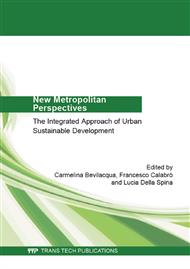[9]
following the directives for both the framing of professionals and to identify the correct salary according to the category identified and the cost of labor relative to profit entity, which as mentioned, unlike the non-profit entity, proffering real wages to be paid for 14 months. Among the falls tariff arising out of activities include the figures relating to guided tours, rental of audio guides, organization of internships and educational activities, entrance to the Park and the sale of information material to the Book Shop. Conclusions From the comparison between the two situations presented, it is clear that for-profit entity, having to bear costs more than the subject no profit attributable to the high cost of personnel, Fig.2, not occurs the economic and financial equilibrium, resulting unsustainable in a scenario which shows a negative balance, being the higher costs of revenues. For the no profit entity, on the contrary, the balance is verified, and in general is more likely to occur, identifying himself as the best solution for the management of the assets in question, as required by the Code of Cultural Heritage and Landscape. This solution would lead to the persistence of long-lasting enhancement activities to the cultural heritage of the Park, but in general, all of the cultural heritage, which otherwise, as often happens, would remain valid attempts not intended to achieve the desired results, even with best restorations. If the overall goal is to protect, preserve and promote the cultural and environmental heritage, ensuring its permanence to future generations, and at the same time, 'use' this heritage as a tool for growth and sustainable development for particularly disadvantaged areas such as that relating to case study of this analysis, it is necessary, therefore, to make use of the many valid and no profit private entities that affect the region. Table 1, Balance between costs and revenues no profit subject no profit subject
operating costs
Years of management
1
2
3
4 -10
A. Purchases and consumption of goods and services
€ 9.245,00
€ 17.460,00
€ 29.510,00
€ 29.510,00
B. Ordinary maintenance
€ 980,00
€ 1.410,00
€ 1.790,00
€ 1.790,00
C. Extraordinary maintenance
€ 0,00
€ 4.500,00
€ 9.000,00
€ 9.000,00
D. Other costs: Utilities
€ 5.225,00
€ 6.050,00
€ 6.400,00
€ 6.400,00
E. Other costs: Fixed
€ 3.700,00
€ 3.700,00
€ 3.700,00
€ 3.700,00
F. Other costs: Variables
€ 4.050,00
€ 5.950,00
€ 6.750,00
€ 6.750,00
G. Staff
€ 35.900,00
€ 42.880,00
€ 55.300,00
€ 55.300,00
TOTALE (∑ A - G)
€ 59.100,00
€ 81.950,00
€ 112.450,00
€ 112.450,00
Financial returns
Years of management
1
2
3
4 -10
A. tariff returns
€ 59.100,00
€ 81.950,00
€ 112.450,00
€ 112.450,00
TOTAL
€ 59.100,00
€ 81.950,00
€ 112.450,00
€ 112.450,00
Management Financial Balance
Years of management
1
2
3
4 -10
A. Total Operating Costs
€ 59.100,00
€ 81.950,00
€ 112.450,00
€ 112.450,00
B. Total returns tariff
€ 59.100,00
€ 81.950,00
€ 112.450,00
€ 112.450,00
REMAINING (B – A)
€ 0,00
€ 0,00
€ 0,00
€ 0,00
CUMULATIVE REMAINING per year
€ 0,00
€ 0,00
€ 0,00
€ 0,00
Table 2, Balance between costs and revenues profit subject profit subject
operating costs
Years of management
1
2
3
4 -10
A. Purchases and consumption of goods and services
€ 9.245,00
€ 17.460,00
€ 29.510,00
€ 29.510,00
B. Ordinary maintenance
€ 980,00
€ 1.410,00
€ 1.790,00
€ 1.790,00
C. Extraordinary maintenance
€ 0,00
€ 4.500,00
€ 9.000,00
€ 9.000,00
D. Other costs: Utilities
€ 5.225,00
€ 6.050,00
€ 6.400,00
€ 6.400,00
E. Other costs: Fixed
€ 3.700,00
€ 3.700,00
€ 3.700,00
€ 3.700,00
F. Other costs: Variables
€ 4.050,00
€ 5.950,00
€ 6.750,00
€ 6.750,00
G. Staff
€ 67.286,45
€ 96.123,50
€ 134.572,90
€ 134.572,90
TOTAL (∑ A - G)
€ 90.486,45
€ 135.193,50
€ 191.722,90
€ 191.722,90
Financial returns
Years of management
1
2
3
4 -10
A. Tariff returns
€ 59.100,00
€ 81.950,00
€ 112.450,00
€ 112.450,00
TOTAL
€ 59.100,00
€ 81.950,00
€ 112.450,00
€ 112.450,00
Management Financial Balance
Years of management
1
2
3
4 -10
A. Total Operating Costs
€ 90.486,45
€ 135.193,50
€ 191.722,90
€ 191.722,90
B. Total returns tariff
€ 59.100,00
€ 81.950,00
€ 112.450,00
€ 112.450,00
REMAINING (B – A)
-€ 31.386,45
-€ 53.243,50
-€ 79.272,90
-€ 79.272,90
CUMULATIVE REMAINING per year
-€ 31.386,45
-€ 84.629,95
-€ 163.902,85
-€ 243.175,75
Other costs: Variables Other costs: Fixed Other costs: Utilities Extraordinary maintenance Staff Ordinary maintenance Purchases and consumption of goods and services Fig. 2 Comparison simulation cost-benefit subject-profit and no profit Rererences
Google Scholar


